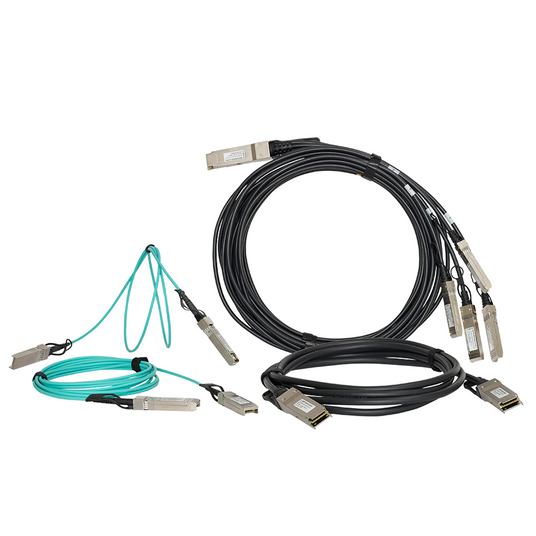DACs (Direct Attach Cables) and AOCs (Active Optical Cables) are high speed cabling solutions used in networking and data centre interconnects. They are preassembled cables with built-in transceivers on both ends, offering a simple plug-and-play setup for easy deployment. While both serve similar purposes, they have key differences that should be considered when selecting the right cable for your needs.
Direct Attach Cables (DACs)
DACs are copper cabling solutions primarily used in top of rack applications to connect switches and servers. They consume less power than AOCs as they do not require electrical to optical conversion.
There are two types of DAC: passive and active. Passive DACs are generally shorter and do not require additional power to transmit data. Active DACs can be slightly longer and have built in components to boost signals, requiring slightly more power.
Active Optical Cables (AOCs)
AOCs are optical cables, meaning that they use light signals over fibre as opposed to electrical signals used in copper cabling. This means that they are fully resistant to Electromagnetic interference (EMI), ensuring stability and reliable performance.
These cables are commonly used for connecting racks over longer distances, with a range of up to 100m. They consume more power than DACs as they must convert electrical signals to optical ones and then back again. AOCs typically have higher initial and operational costs as they have a more complex internal structure, consume more power and have longer range capabilities.
Comparison
|
|
Passive DAC |
Active DAC |
AOC |
|
Cable Material |
Twinax Copper |
Twinax Copper |
Optical Fibre |
|
Signal Type |
Electrical |
Electrical |
Optical |
|
Reach |
<7m |
<15m |
<100m |
|
Power Consumption |
<0.15W |
<0.5W |
>1W |
|
Cost |
Lowest |
Low |
Highest |











